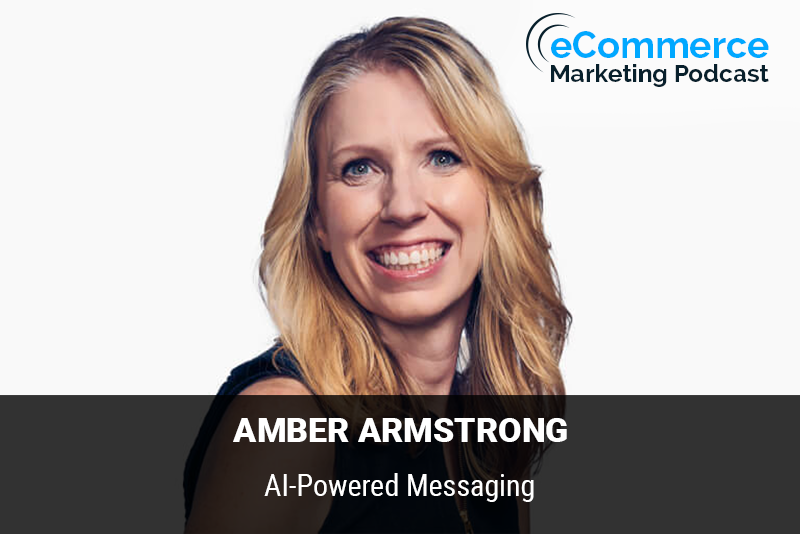
The eCommerce Marketing Podcast walks you through everything that goes into ecommerce marketing — from inbound marketing to paid advertising to conversions. Learn the strategies top marketing experts use to grow their businesses.
Marketing Strategies Revealed in this Episode:
- What is AI-Powered messaging
- How AI-Powered messaging along with top customer care helps bring new customers and retain current ones
- Tools and resources that help an ecommerce business generate and manage AI-Powered messaging
- Examples of businesses that have successfully set up and managed AI-Powered marketing campaigns
- Examples of businesses that have successfully filled crucial marketing roles and the types of success they saw after doing so.

In this episode of the eCommerce Marketing Podcast, host Arlen Robinson interviews Amber Armstrong, SVP and Chief Marketing Officer at LivePerson. Amber discusses the transformative power of high-powered messaging and AI in enhancing customer interactions for eCommerce businesses. She explains how conversational commerce can improve customer experience, streamline support, and drive sales. Amber also shares her insights from her extensive background in AI-infused SaaS businesses at IBM and her current role at LivePerson.
Key Takeaways:
- Introduction to Amber Armstrong (0:00 – 2:00)
- Amber’s background and her role at LivePerson.
- Her experience leading marketing for AI-infused SaaS businesses at IBM.
- High-Powered Messaging and AI (2:01 – 7:00)
- Definition and benefits of high-powered messaging.
- How AI enhances customer interactions and support efficiency.
- Customer Experience Improvements (7:01 – 12:00)
- Examples of improved customer experiences using AI-powered messaging.
- Benefits for both consumers and businesses, including reduced wait times and cost savings.
- First-Party Data and Personalization (12:01 – 17:00)
- Importance of first-party data in a cookie-less world.
- How messaging provides personalized customer journeys.
- Conversational Ads and New Customer Acquisition (17:01 – 21:00)
- Using conversational ads to engage new customers.
- How messaging ads reduce churn and enhance customer engagement.
- Tools and Resources for Implementing Messaging (21:01 – 25:00)
- Resources available at LivePerson for businesses interested in high-powered messaging.
- Importance of crafting customer journeys and using AI for continuous learning.
- Balancing AI and Human Touch (25:01 – 30:00)
- Ensuring AI interactions maintain a human touch.
- The role of AI in analyzing conversations and improving responses over time.
- Successful Use Cases (30:01 – 35:00)
- Examples of successful implementations at Home Depot, Dunkin Donuts, and more.
- How these businesses have used messaging to improve customer service and drive sales.
Guest Information:
Amber Armstrong
SVP, Chief Marketing Officer at LivePerson











